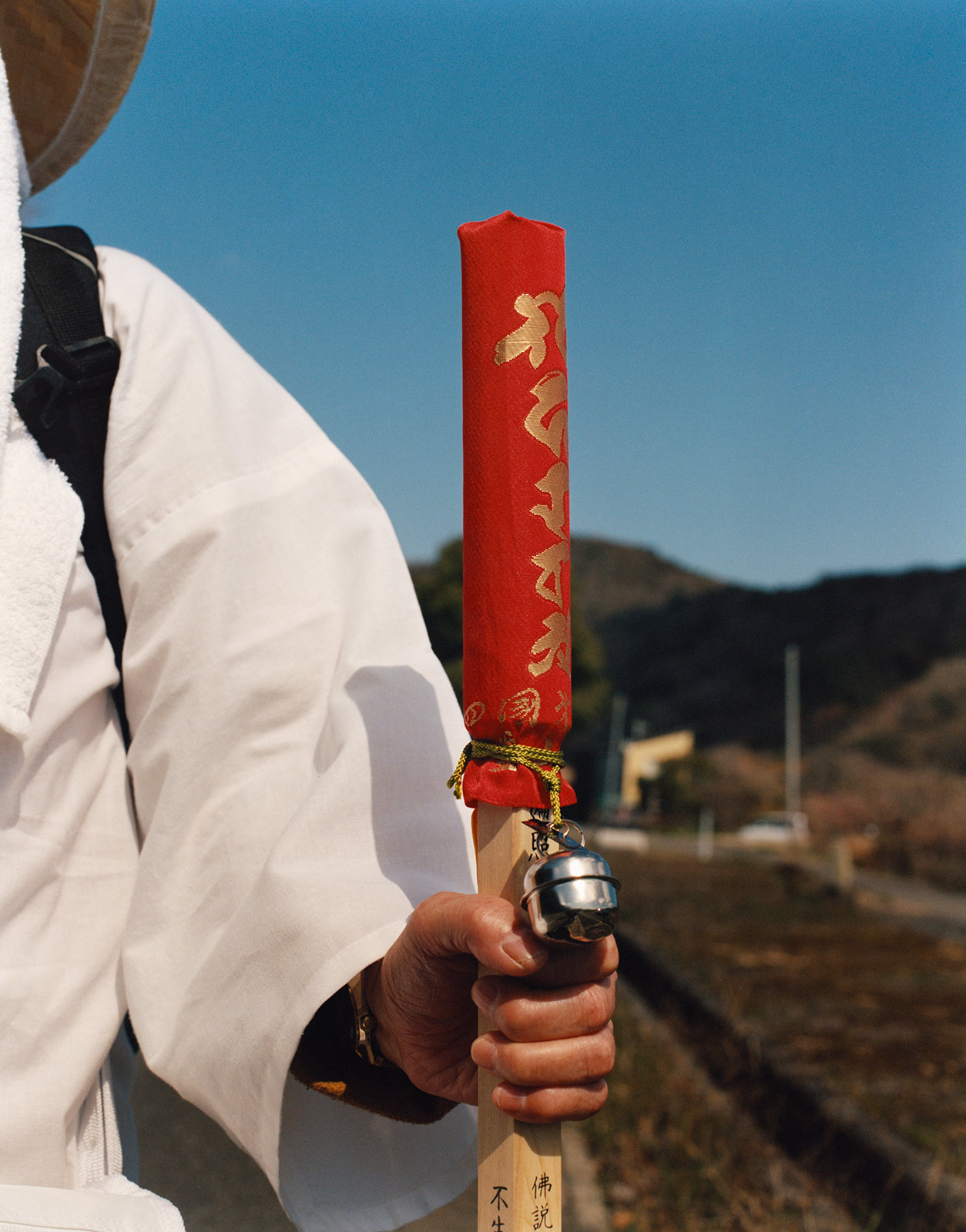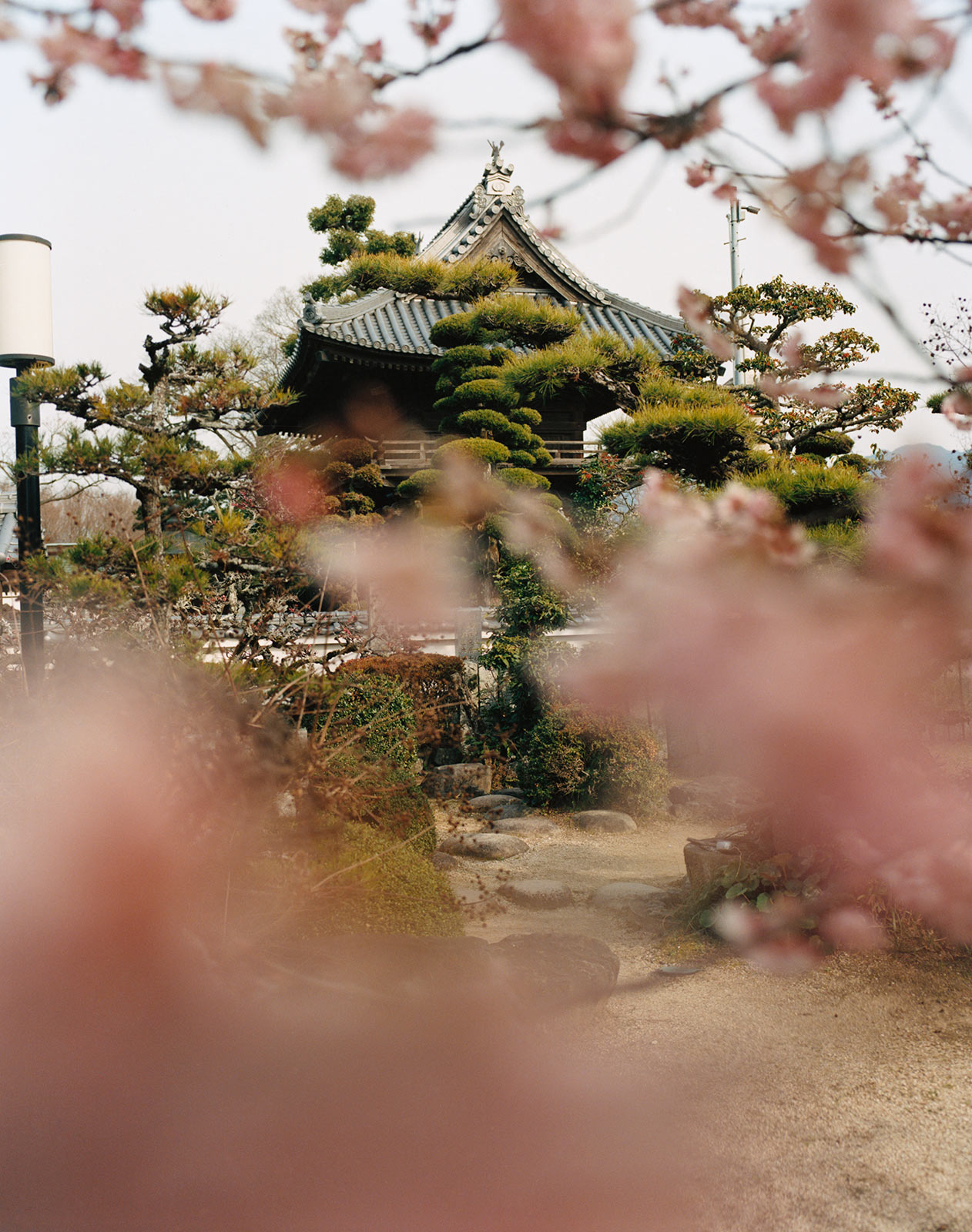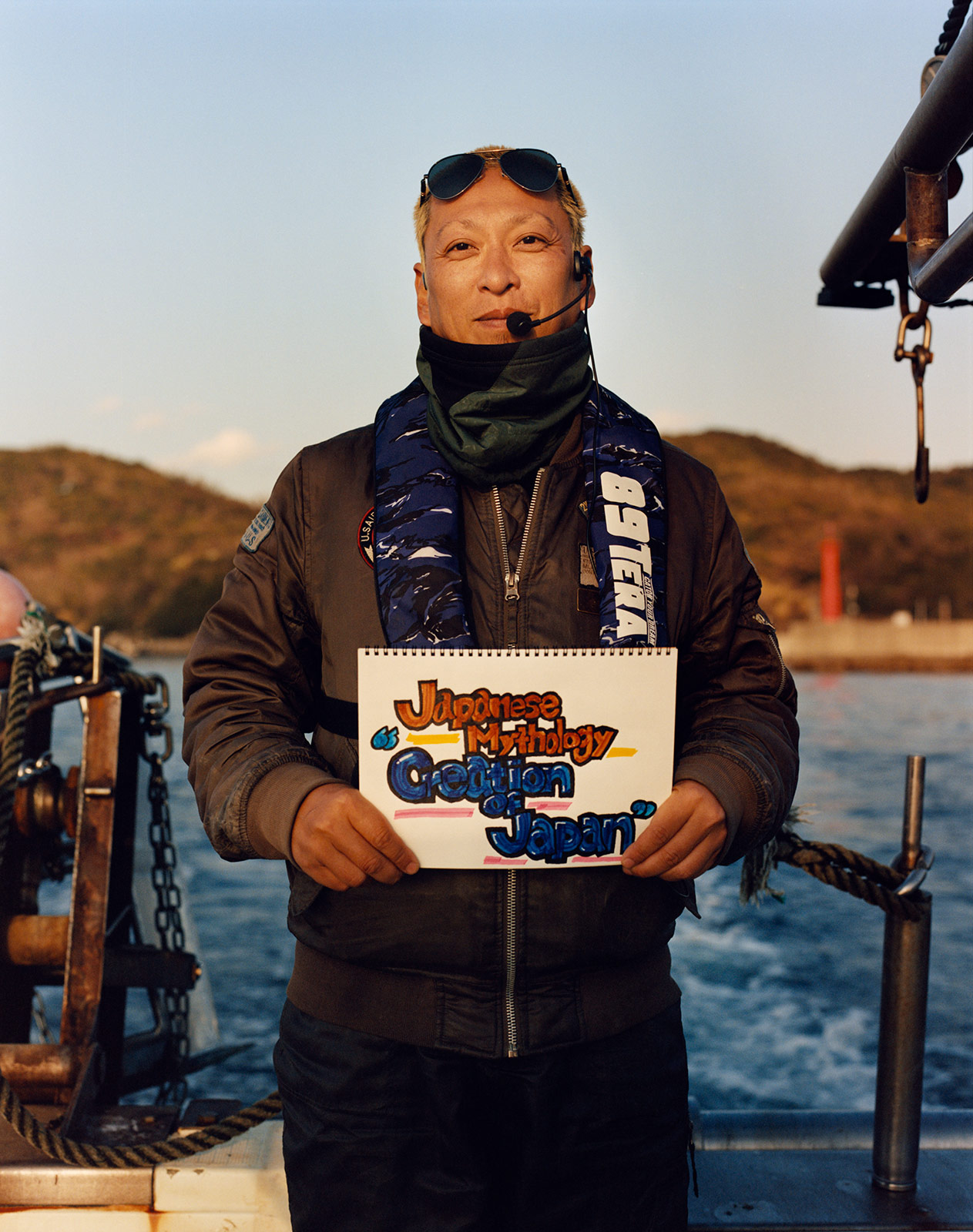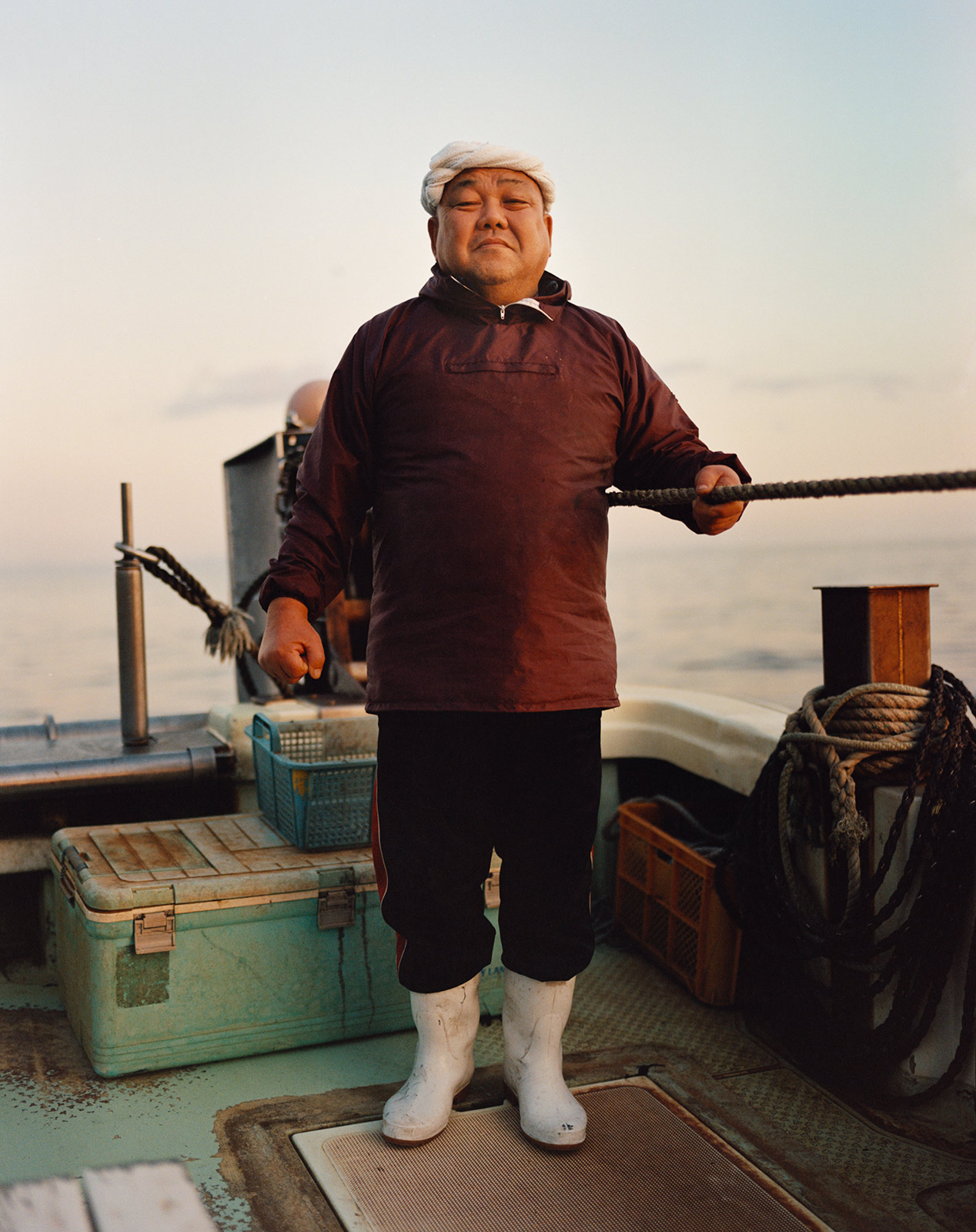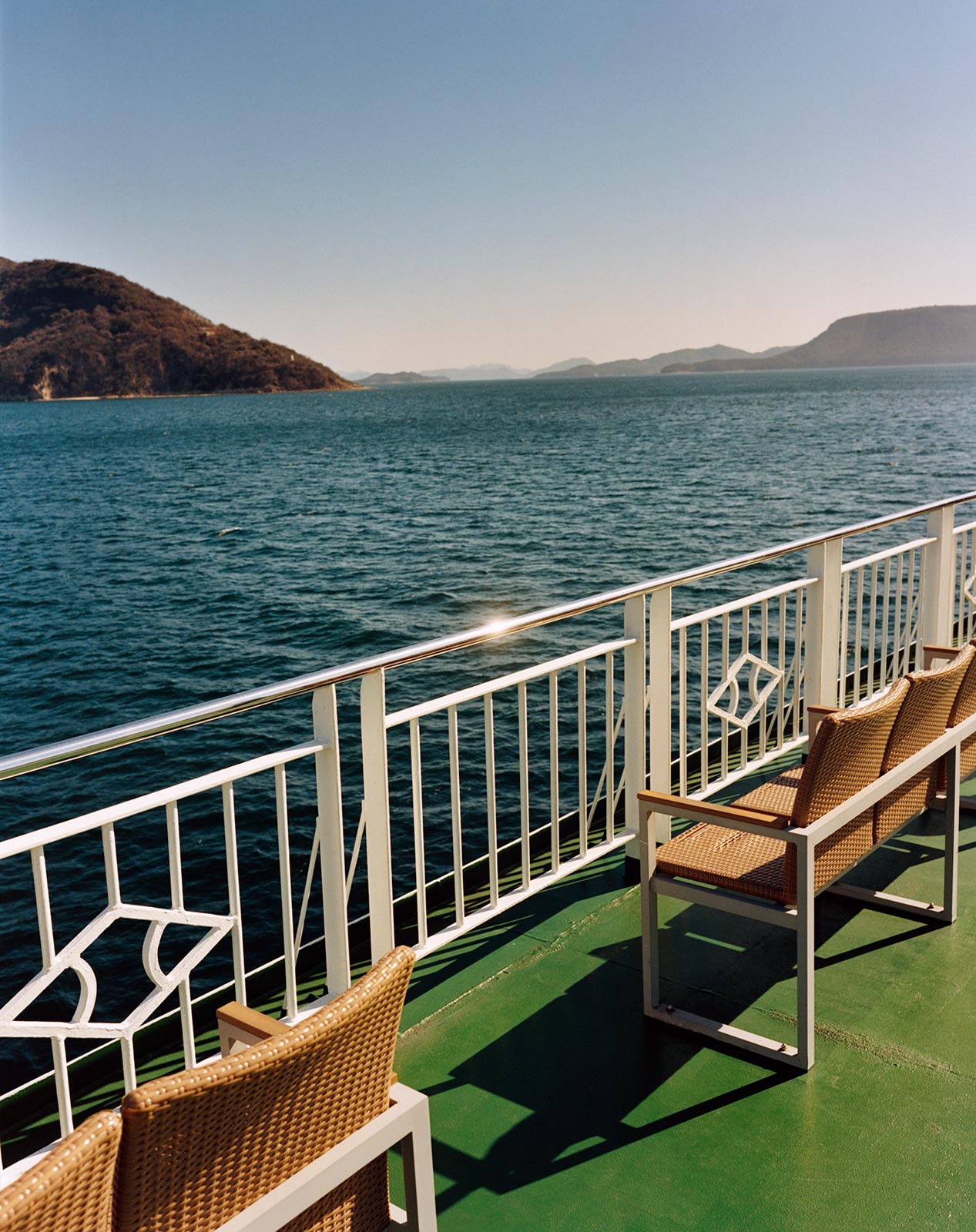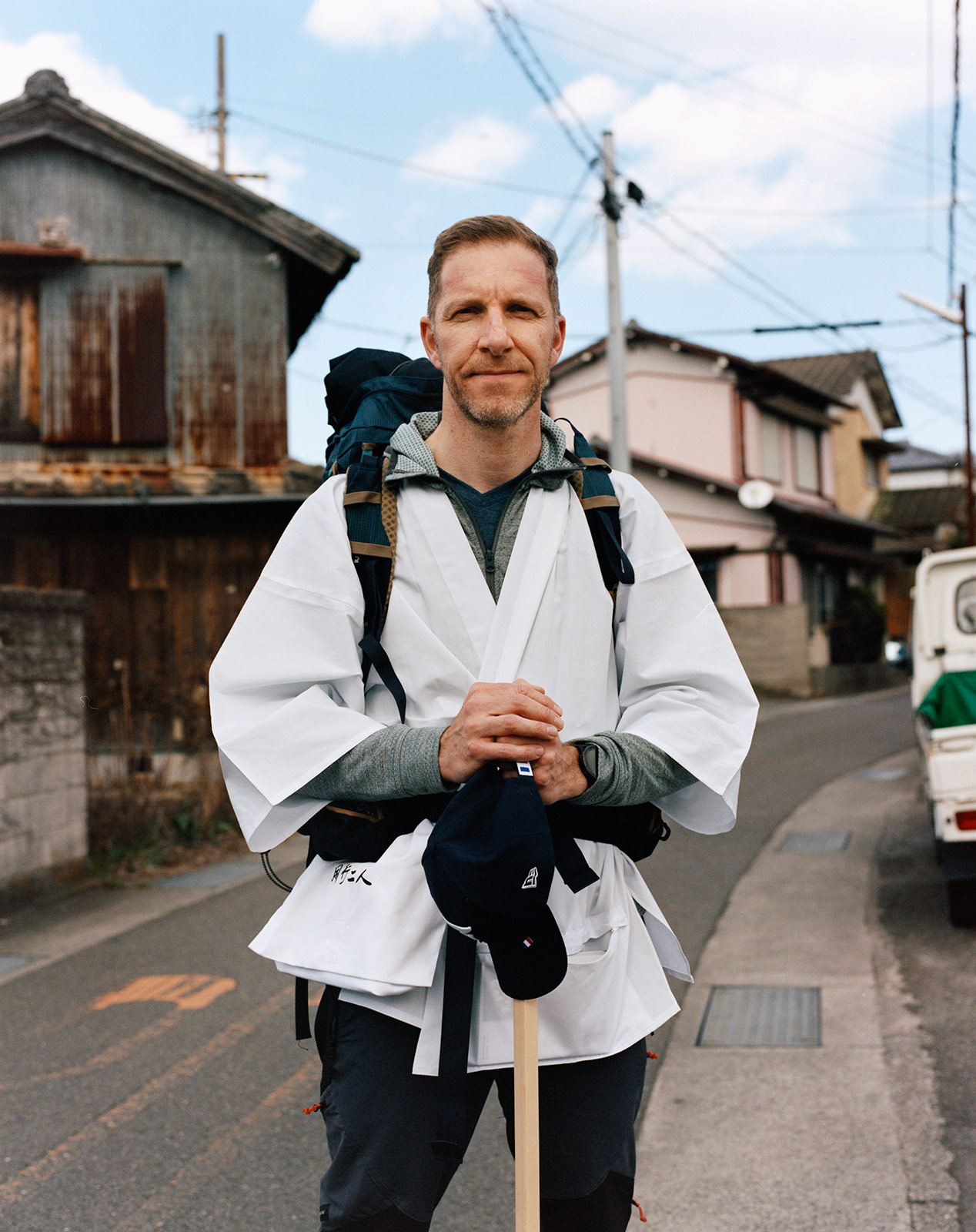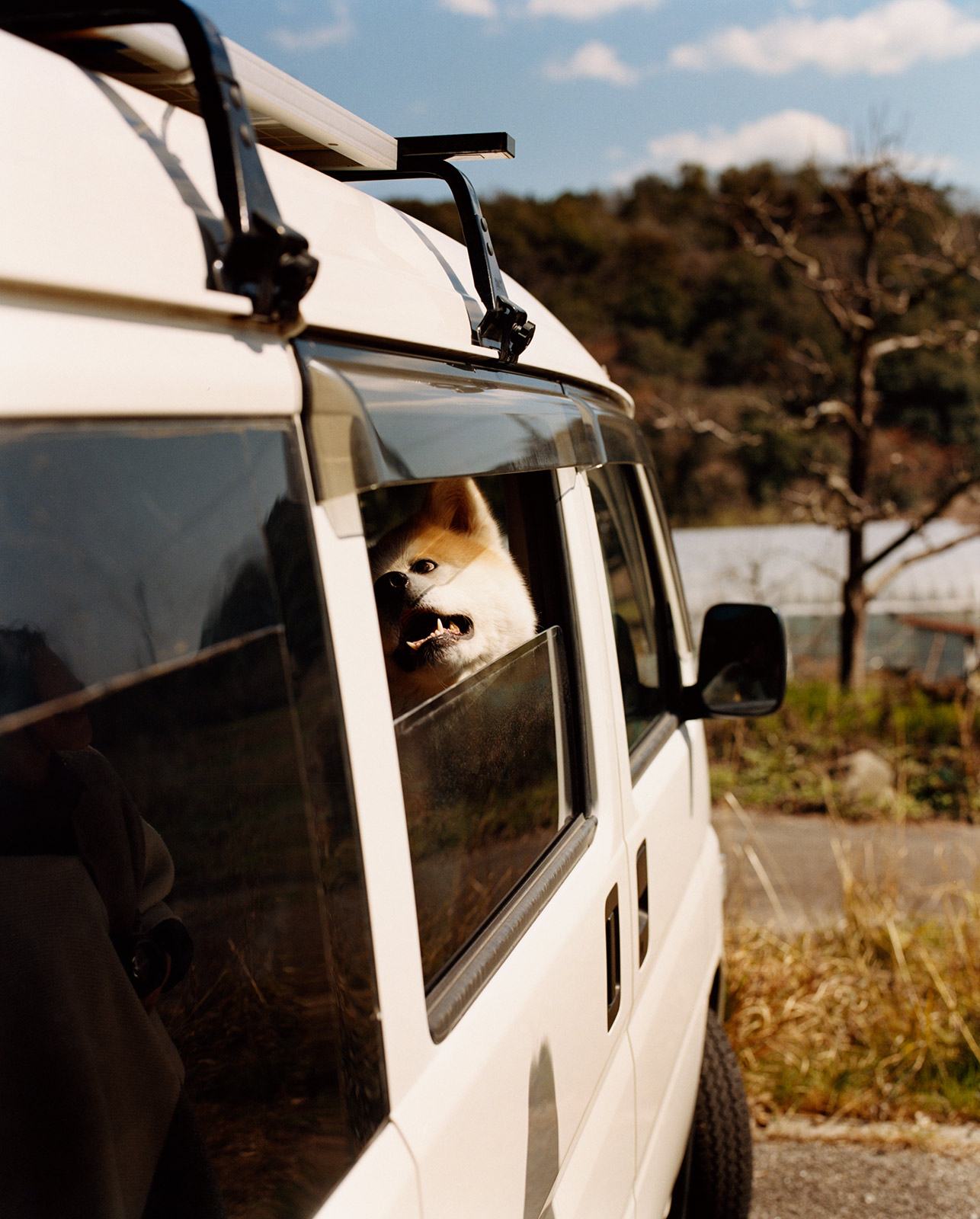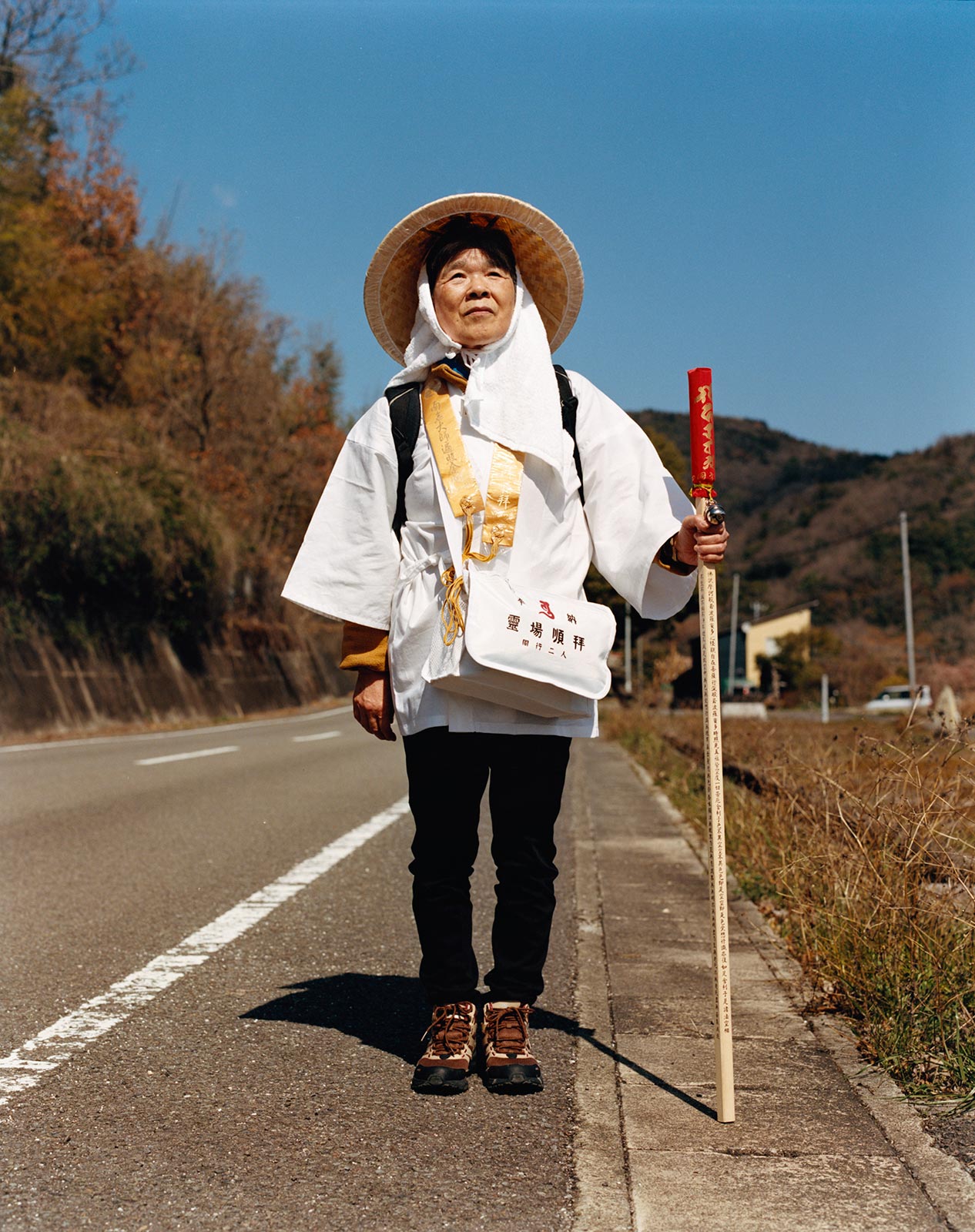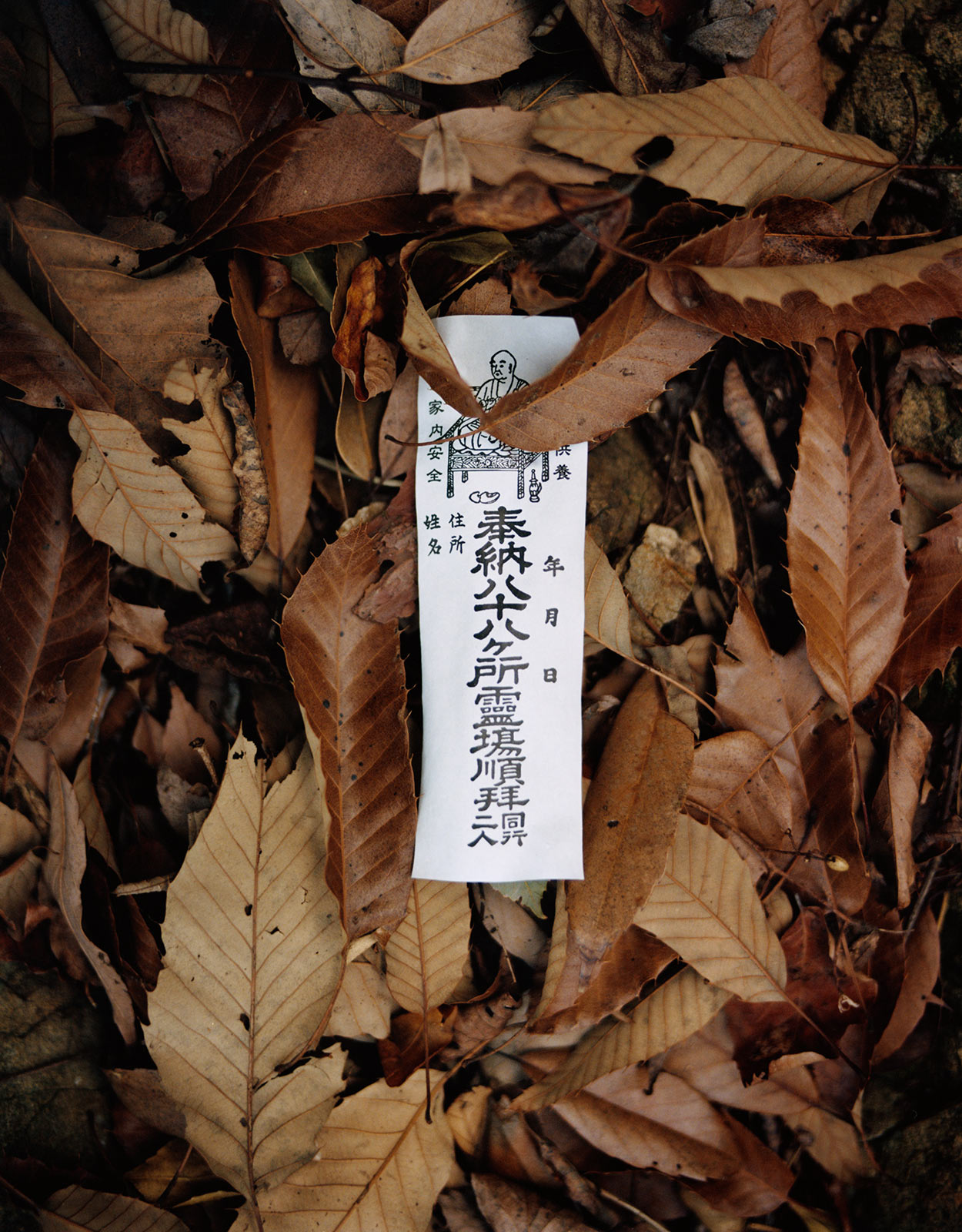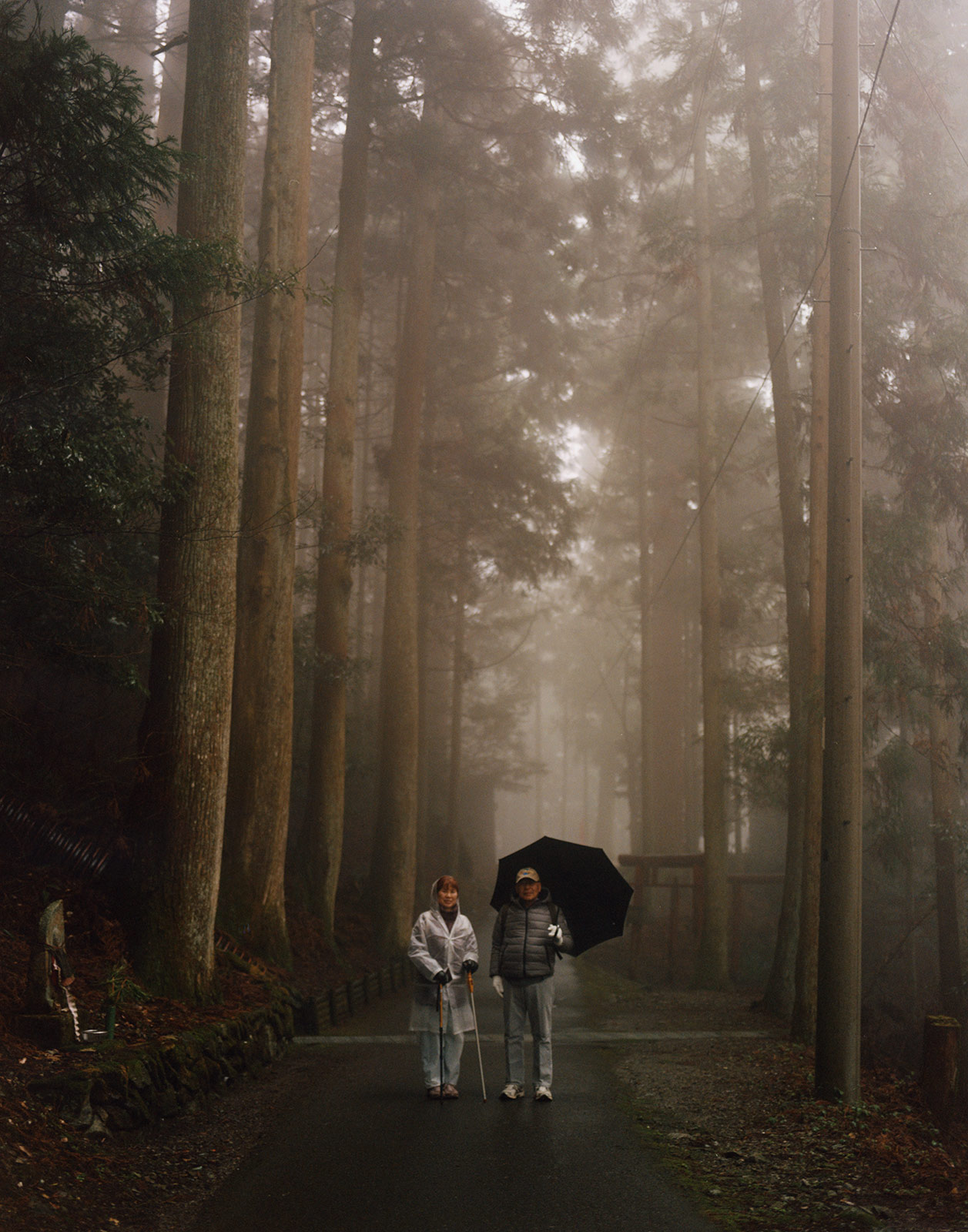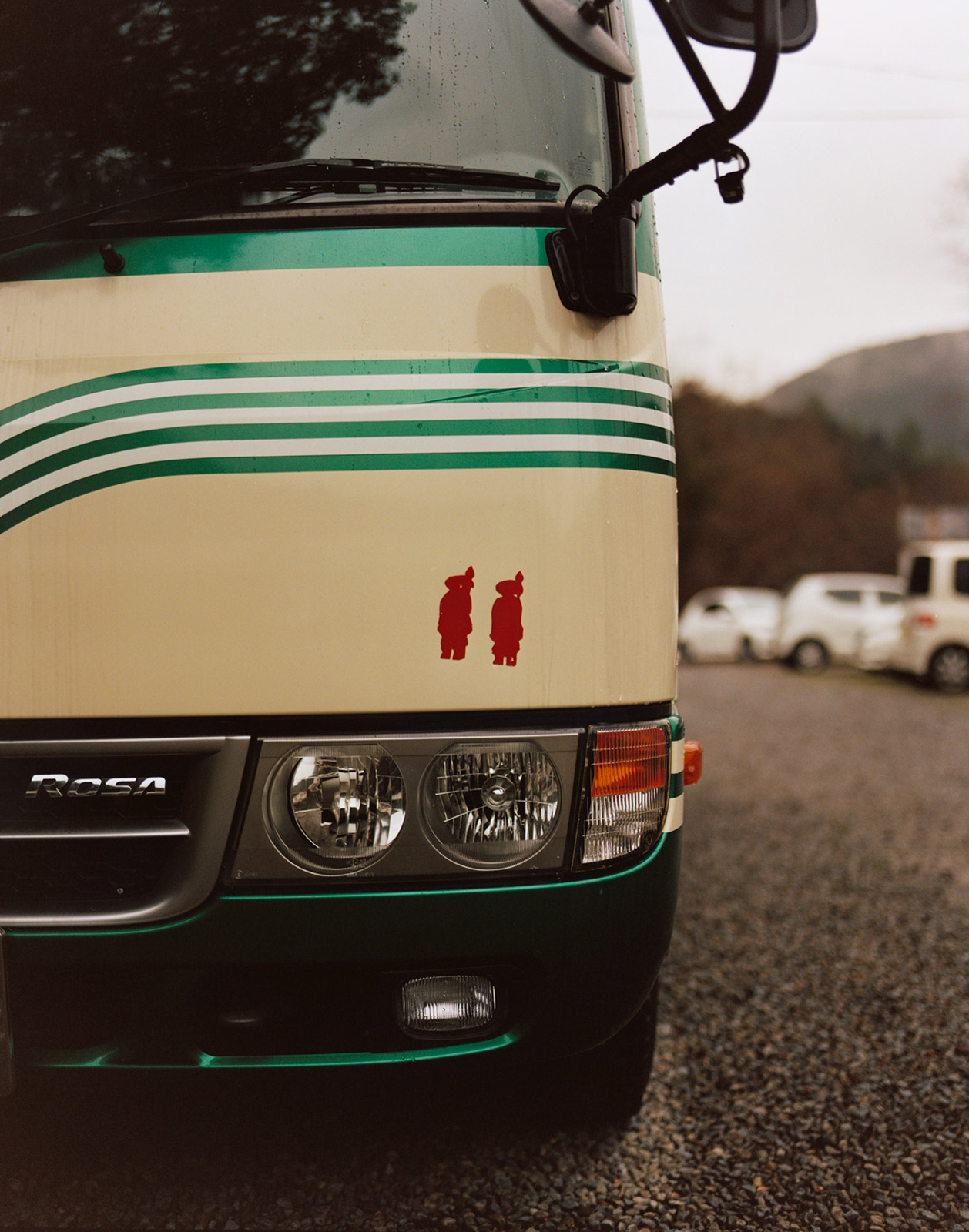Land art, mythic stones, Shikoku pilgrims, and contemporary architecture as seen by photographer Laurence Ellis for Document’s Spring/Summer 2024 issue
A pale yellow koi shimmers just under the surface of the water, cherry blossoms wave in the breeze. A swallow lands in the eaves of the temple. Haru ga kita: Spring is finally coming. Rhythmic signs reveal the seasons. In a large city like Tokyo, these signs may feel abstract, noticeable only through a change in temperature or seasonal fruits appearing on the shelves of grocery stores. For those urbanites who wish to retain some connection to nature, a pilgrimage outside the city becomes a regular habit.
These city birds might migrate south through the Seto Inland Sea to the island of Shikoku. Travelers follow the steps of Buddhist priest Kūkai, who in 815 traversed the island to visit all of its 88 temples. Initiates carry a special staff and don white garb, signaling to locals that they are completing this trek. The journey was traditionally completed on foot over 40 days and nights, but now can be completed more quickly and comfortably by car in just two days, raising a question: is it the visits to the 88 temples that brings enlightenment, or the arduous journey itself?
The islands of Japan burst forth from deep under the ocean, violently formed over days and weeks following volcanic eruptions. Mount Fuji itself, now a popular tourist attraction, was once regarded as a malevolent goddess who remade the surrounding land to her liking with her fiery temper. Perhaps, then, it is apt that Japanese temples are also reborn with regularity: made from wood, they must be built anew every few decades as rot sets in. Modern technology may create artificial comforts which interrupt our connection to nature, but technology can be used to enhance this connection too. On Awaji Island, a temple showcases an unusual concrete construction: Mizumido. A massive pond of water lilies is bisected by stairs of béton brut descending into the dark. At the base of the stairs, a shock of orange light suffusing from behind a shrine beckons. Built by Tadao Ando in 1991, this temple challenges tradition. While other temples are in a continuous cycle of decay and repair, so long as it is maintained, it will be a very long time before Mizumido needs to be rebuilt. Only history will show whether this use of more permanent materials is a monument to humanity’s hubris or a new way of finding harmony with nature.
Left: Yoshiko holds a kongō-zue, a wooden staff carried by pilgrims on the Shikoku Pilgrimage, which comprises a loop of 88 temples. The staff is meant to stand in for the body of the Buddhist monk Kūkai, and it must have its “feet” washed every day. The inscription reads,“we two pilgrims together.”
Right: Sairin-ji temple, the 48th of the Shikoku Pilgrimage.
Portrait of Gou Onogama, a tour guide on the island of Nushima. Ancient mythology describes the location as the birthplace of Japan.
Left: Portrait of Masazou Taniguchi, a fisherman on the small island of Nushima.
Right: This sacred rock of Nushima is the “sister” to the more famous Kamitategami. In ancient Japanese mythology, both played central roles in the formation of the country by the deities Izanagi and Izanami.
Left: Last year, Japan mapped 7,000 islands not identified up till that point, bringing the country’s total to 14,125. Many can only be accessed by boat.
Right: Etienne walks between temples one and two on the 750-mile-long Shikoku Pilgrimage.
Left: Anraku-ji, the sixth temple of the Shikoku Pilgrimage.
Right: While koi existed in Japan for centuries, it wasn’t until the late 1800s that a fascination with breeding the fish in rich, ornamental colors became common. In 1914, after an exhibition of vibrant breeds in Tokyo, eight were presented to the crown prince, and sales exploded.
Left: A Shiba Inu, the smallest of Japan’s six oldest dog breeds.
Right: Yoshiko walks along the highway, completing the Shikoku Pilgrimage.
Left: Teiji and his mother walking the Shikoku 88-temple pilgrimage.
Right: Residents of the rural island Teshima have recently begun to restore the terraced rice fields, in which now stands the Teshima Art Museum.
Left: Pilgrims Takayo and Mobuyiki outside Yokomine-ji temple, the 60th of the Shikoku route.
Right: On the Shikoku Pilgrimage, many of the estimated more than 100,000 pilgrims each year carry paper osamefuda slips. Pilgrims write their names on the paper slips and leave them at one of the island’s 88 Buddhist temples or gift them to others.
Left: Yokomine-ji temple, the 60th site of the Shikoku Pilgrimage, stands in the foothills of Mount Ishizuchi, the highest peak in western Japan.
Right: The 750-mile Shikoku route was traditionally completed on foot, but walking pilgrims are now joined by cars, taxis, buses, bicycles, and motorcycles. Most pilgrims complete the path in one or two months.



